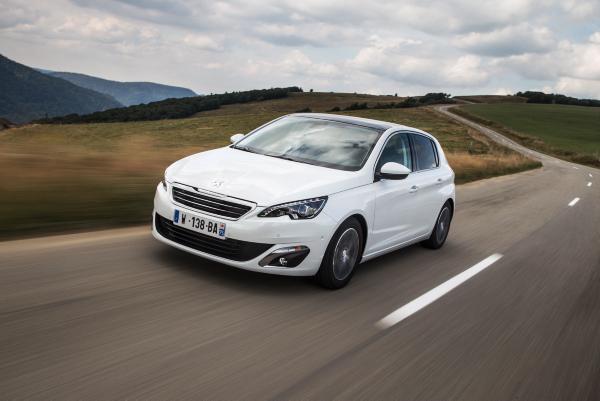Nissan Qashqai
There are plenty of new cars on the way for 2014. Across the ranges there will be many new models, but I suppose the most popular new car for 2014, and the one that will attract most of the attention, will be the new Nissan Qashqai.
The revamped Nissan Qashqai aims to take over the role of market leader in its segment, and it is still one of the most popular cars in Ireland.
With over 20,000 sold since it was introduced in 2007, the new generation Qashqai is claimed to offer additional style, technology and excitement. The car is also claimed to be more efficient.
The Qashqai goes on sale in Ireland in January. Prices start at €24,495 – that’s about €2,000 more than the entry price for the current model, so expect to get a lot more. In looks alone, the car is more modern and stylish than the current model.
Peugeot 308
Peugeot’s new 308 is another new machine for 2014. The car looks bigger than the current model, and comes with an entry price of €18,990, plus dealer delivery charges, for the basic 1.2-litre petrol-powered offering.
All of the new-generation cars are claimed to be more fuel efficient than the current versions. They are available with the new hybrid diesel engine for even greater economy, and all come with a five-year warranty deal.
Ford EcoSport SUV
Ford will introduce a new EcoSport SUV, which will be a compact SUV, during 2014. The car will be priced from €23,995, competing against the likes of the new Nissan Qashqai for size, style and economy.
This is the first SUV in the world to offer a 1.0-litre engine. It will be among the first of the Ford cars in Europe to be offered with Ford SYNC with AppLink. This allows drivers to voice-control smartphone apps while keeping their eyes on the road and their hands on the wheel.
The new Ford EcoSport will be fitted with the turbocharged 1.0-litre EcoBoost petrol engine. Ford claims that this engine will deliver a performance to rival a traditional 1.6-litre petrol engine, but with significantly better fuel efficiency and lower CO2 emissions – and lower road tax.
The entry level EcoSport with the 125bhp 1.0-litre EcoBoost engine achieves an economy level of 6.6l/100 km. Ford claims that the 91bhp 1.5-litre diesel engine version delivers almost 20% better efficiency with lower CO2 emissions.
Honda CR-V
I’m also looking forward to driving the new Honda CR-V with its thrifty 1.6-litre turbo-diesel engine. At €31,995, the entry price is more competitive than in the past. Honda claims that this is the lightest engine of its type in the world. It offers class-leading emissions of 119g/km for annual road tax from just €200.
Honda is claiming a fuel economy figure of 4.5 litres of fuel for every 100km driven, the equivalent of 62.8mpg. This level of efficiency means a range in excess of 1,280km from a full tank of diesel.
Standard equipment on all models includes dual-zone climate control, 17in alloy wheels, cruise control, one-motion folding rear seats, idle stop, remote audio controls, electric front and rear windows, alarm, USB connectivity and daytime running lights.
Mazda3
Among the other new entrants for 2014 will be the new Mazda3. This car borrows its design from the larger Mazda6 and looks really well. It will be available as either a hatchback or saloon-style car with a good-sized boot.
The new Mazda3 has extra safety features such as the Smart City Brake Support (SCBS) which helps to reduce or prevent low-speed collisions by automatically applying the brakes if the driver fails to act. It also has Hill Hold Assist (HHA) to prevent roll-back.
This new Mazda3 offers higher specification levels across models, including SE, Executive and Executive SE to the newly introduced GT/Platinum grades.
Prices will be significantly higher for the new Mazda3 range. They will start from €21,595 for the SKYACTIV-G petrol 100bhp and from €25,295 for the SKYACTIV-D diesel 150bhp.
BMW’s electric i3
On the electric car front, BMW’s i3 is the new arrival for 2014. This car has some novel design features, including a body that’s made mostly from carbon fibre that’s derived from farm-produced crops. The lightweight body of the car makes up for the extra weight of the battery system.
BMW claims that the car’s electric motor generates an output of 170bhp, with peak torque of 250Nm on demand instantly. This allows the BMW i3 to sprint from zero to 50km/hr in a mere 3.7 seconds, and zero to 100km/hr in just 7.2 seconds, while the lithium-ion battery gives a range of 140km to 180km in everyday driving. BMW claims that this rises by approximately 15% in ECO PRO mode and by the same again in ECO PRO+ mode.
So farmers, while maybe not electric car users due to the current range limitations, need to watch the progress of this carbon fibre car for the future.






 This is a subscriber-only article
This is a subscriber-only article










SHARING OPTIONS: